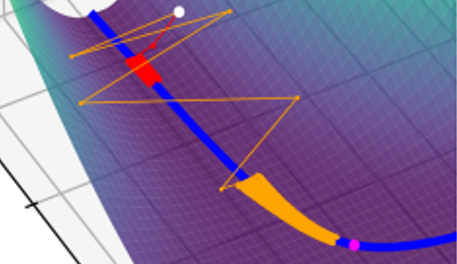|
Hello! I'm a Postdoc at MIT with Prof. Tomaso Poggio.
I work on Machine Learning Theory and the mathematics to develop it.
|
|
I work on the theoretical foundations of machine learning, particularly on deep neural networks and their optimization.
More precisely, in my PhD I studied (1) where optimization algorithms converge on general landscapes, (2) how hyper parameters affect that, and (3) if we can link this to changes in performance of the resulting models.
I recently started working also on the instabilities of training.
I'm also getting interested in certification of neural networks and a lot of other topics in machine learning theory.
If you're interested you can watch these talks of mine:
|
|
|

|
Edge of Stochastic Stability: Revisiting the Edge of Stability for SGD.
|

|
Gradient Descent Converges Linearly to Flatter Minima than Gradient Flow in Shallow Linear Networks.
|

|
How Neural Networks Learn the Support is an Implicit Regularization Effect of SGD.
|

|
On the Trajectories of SGD Without Replacement.
|

|
Deep neural network approximation theory for high-dimensional functions.
|

|
High-dimensional approximation spaces of artificial neural networks and applications to partial differential equations.
|
|
Sometime in my PhD I got interested in the ethical aspects of my job. I contributed to the organization of multiple events to raise the awareness of the community around the responsibilities of modelers and statisticians for the high-stakes decisions and policies that are based on their work.
See
CEST-UCL Seminar series on responsible modelling and check out our conference.
I was in the committee of the Princeton AI Club (PAIC), where we hosted a lot of exciting talks featuring Yoshua Bengio, Max Welling, Chelsea Finn, Tamara Broderick, etc. I spoke about the advent of AI and its impact on society in Italian public radio, at Zapping on Rai Radio 1, etc. |
Teaching
- Statistical Learning Theory and Applications -- MIT (Fall 2025)
- Senior Thesis -- Princeton (F 2024 and S 2025)
- Optimization -- Princeton (Spring 2024)
- Computing & Optimization -- Princeton (Fall 2023)
- Analysis of Big Data -- Princeton (S 2022 and 23)
- Energy & Commodities Markets -- Princeton (Fall 2021)
- Numerical PDEs -- ETH Zurich (Spring 2020)
- Computational Methods for Engineering and Applications -- ETH Zurich (Fall 2019)
|
Last modified on Jun 7th 2025. |
Template credits to Jon Barron! |